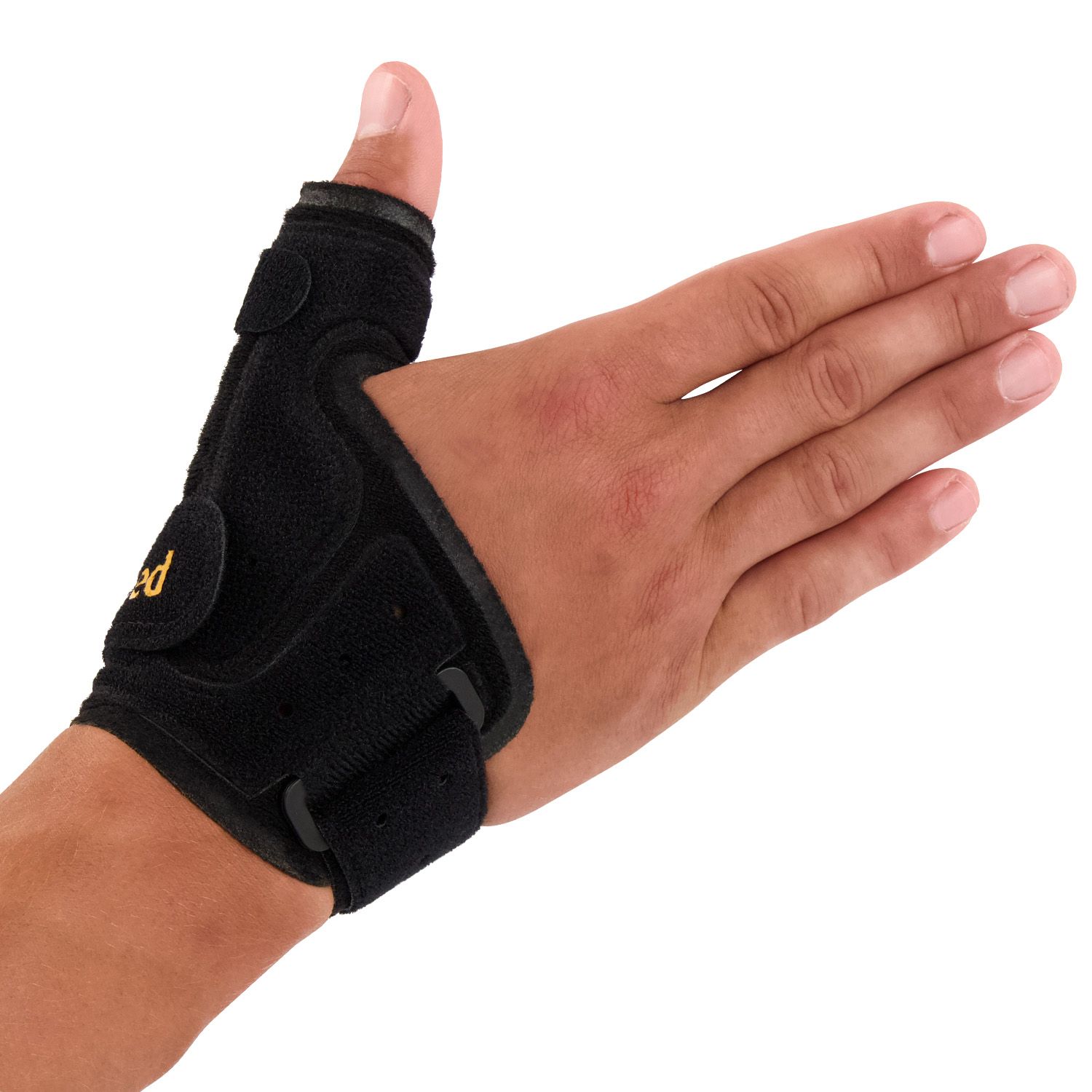Ligament Problems - Others
Ligament injuries in the thumb can present with various symptoms.
- Stener lesion: a skier's thumb where the tendon becomes trapped in the tear of the ligament in one of the thumb muscles
- A chronic form of skier's thumb, caused by repeated thumb movements (Gamekeeper's thumb)
- Ulnar collateral ligament injury of the metacarpophalangeal joint of the thumb
What does ligament injury in the thumb mean?
The small joints of the thumb and fingers are stabilized by ligaments. There is one ligament on the underside that prevents hyperextension, and two side ligaments that provide lateral stability. In cases of thumb ligament injury, the ulnar collateral ligament (on the pinky side of the thumb) is torn.
This occurs at the joint between the first phalanx and the metacarpal bone of the thumb, also known as the metacarpophalangeal (MCP) joint.
In severe cases, the ligament may tear off with a fragment of bone.
Causes of thumb ligament injury
Ligament injury in the thumb is usually caused by trauma in which the thumb is forcefully pulled sideways — for example, getting caught on a ski pole, which is how the term “skier’s thumb” originated. It may also result from repetitive motion that leads to overstretching and weakening of the thumb.
Symptoms of thumb ligament injury
When an injury occurs, symptoms include pain, swelling, reduced mobility, and bruising in the thumb. If not treated properly, it may later result in joint instability, pain, and early cartilage wear.
Treatment of thumb ligament injuries
Treatment depends on the degree of cartilage damage and joint stability.
A hand surgeon will determine this through a physical exam and X-rays; in some cases, the thumb may be numbed for further assessment. If the joint is stable, it can be treated with a splint and approximately 4 to 6 weeks of hand therapy. If the joint is unstable, a bone fragment is detached, or a tendon becomes trapped between the torn ligament ends, surgery is required. In most cases, the ligament is reattached using a bone anchor.
If the ligament is torn in the middle, it can be sutured. If the bone is too small, it is removed, and the ligament is fixed in place with a bone anchor.
Aftercare for thumb ligament injuries
Non-absorbable stitches can be removed after about 10 to 14 days. In some cases, a small pin is placed in the joint, which can be removed after six weeks. Aftercare depends on the surgical technique used. If the ligament is stitched or reattached, the thumb will be immobilized with a splint for three weeks. If the ligament is reconstructed using a tendon from the forearm, a splint will be worn for six weeks. Strength will be gradually restored through hand therapy and a removable splint. After 16 weeks, the thumb can typically be fully loaded again.
Recovery from thumb ligament injury
Pain relief and keeping your hand elevated are usually effective in reducing discomfort after treatment. In the long term, some joint stiffness may persist. Our products help prevent injuries and support recovery after injury.

Novamed Thumb Support / Wrist Splint

Super Ortho Thumb Support CMC

Dunimed Manu Thumb Support

Dunimed Thumb / Wrist Support (in Black and Beige)

- Physiotherapist
- Sports podiatrist
- Manual therapist
- Podopostural therapist
- Myofascial dry needling specialist


